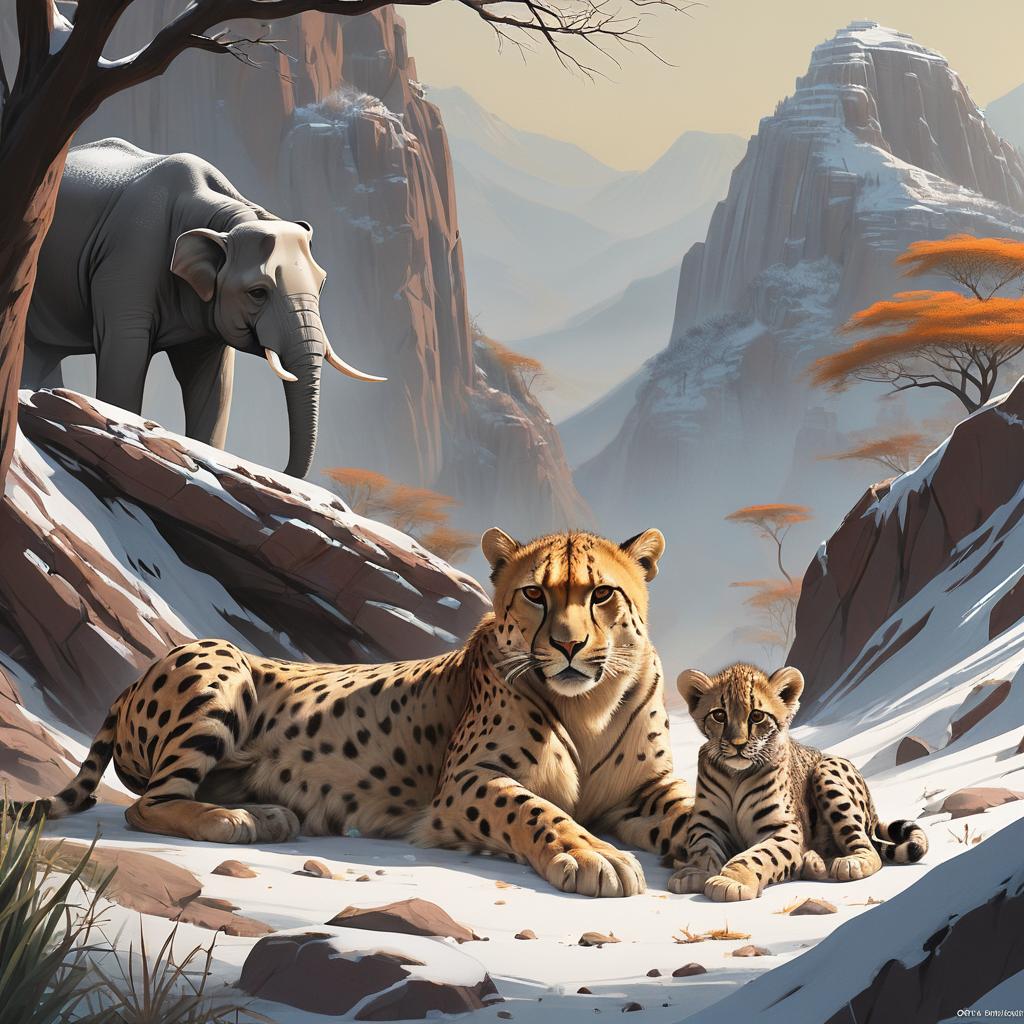In the quiet depths of forests and the vast expanses of grasslands, there exists a world so fragile yet so resilient—a world where every creature, big or small, plays an irreplaceable role in maintaining the delicate balance of nature. But alas, this world is under siege, besieged not by natural forces, but by the hand of man.
Once, the Indian wilderness echoed with the roars of the magnificent Asiatic lions, and the graceful dance of the Indian cheetahs adorned the plains. But now, these voices have faded into whispers, drowned out by the cacophony of human progress.
History holds a mournful tale of how these majestic creatures were pushed to the brink of extinction. The relentless hunt for trophies, the relentless destruction of habitats, and the merciless exploitation of resources—these were the weapons wielded by humanity against its own kin, the creatures of the wild.
The Asiatic lion
Once ranging across vast swathes of Asia, found itself cornered into a single sanctuary in Gir, Gujarat. The Asiatic lion, once the undisputed king of the Indian jungles, possessed a regal aura that commanded respect and admiration. Its thick mane and piercing gaze spoke of strength and resilience, traits that earned it a place in the hearts and minds of people for centuries. But despite its majesty, the Asiatic lion could not withstand the onslaught of human greed. Hunted to near extinction for sport and spectacle, its once-thriving populations dwindled to a mere handful, clinging desperately to survival in the Gir Forests of Gujarat
The Indian cheetah
Hunted for sport and driven from its natural habitat, vanished from the Indian subcontinent, leaving behind only faded accounts in history books. A creature of unparalleled grace and speed. With its sleek body and lightning-fast reflexes, it was the epitome of agility and elegance—a living embodiment of poetry in motion. Yet, despite its extraordinary gifts, the Indian cheetah could not outrun the relentless march of human progress. Hunted to extinction for the whims of kings and nobles, its disappearance from the Indian subcontinent left a void that could never be filled.
But the past is not where this tragedy ends. Today, India is home to numerous species teetering on the edge of oblivion.
The majestic Bengal tiger
The majestic Bengal tiger’s presence in the forests of India is a testament to the country’s rich biodiversity and cultural heritage. Yet, despite its iconic status, the Bengal tiger faces an uncertain future, its numbers dwindling in the face of rampant poaching and habitat loss. the gentle Indian elephant, the elusive snow leopard—all face an uncertain future, their survival hanging by the slender thread of conservation efforts. The Bengal tiger, pride of the Indian wilderness, now struggles to find its place in a rapidly changing landscape. Rampant deforestation and poaching threaten to erase this symbol of strength and grace from the face of the earth.
The Indian elephant, revered in mythology and culture, finds itself hemmed in by human encroachment. Its migratory routes severed, its habitats fragmented, it wanders lost in a world that no longer has space for giants. The Indian elephant, revered in mythology and culture, stands as a symbol of wisdom and strength. Its gentle demeanor and intelligent eyes have captured the imagination of people for centuries, earning it a place of honor in religious ceremonies and cultural festivals. But even the mighty elephant is not immune to the ravages of human greed. Forced to compete for space with an ever-expanding human population, it finds itself pushed to the brink of extinction, its habitats shrinking and fragmented beyond recognition.
Snow Leopard
Ghost of the Himalayas, faces a silent but deadly threat. Climate change is melting away its icy kingdom, pushing it ever higher into the mountains in search of refuge, while poaching and retaliatory killings by humans further hasten its decline. With its thick fur and powerful limbs, it is perfectly adapted to life in one of the harshest environments on earth. Yet, despite its resilience, the snow leopard is fighting a losing battle against the forces of climate change and human encroachment. As temperatures rise and habitats disappear, it is forced to roam ever higher in search of food and shelter, its future hanging in the balance.
If we continue on this path of destruction, the future we leave for our children will be a barren one— a world where the roar of the tiger is but a distant memory, where the elephant is a creature of legend, and where the snow leopard is no more than a story whispered in the winds.
But it is not too late. We still have the power to change course, to rewrite the ending of this tragic tale. Through conservation efforts, sustainable practices, and a renewed respect for the sanctity of all life, we can pave the way for a brighter future—one where man and nature coexist in harmony, and where the wilderness once again resounds with the symphony of life. Let us heed the call of the wild, before it is too late.

